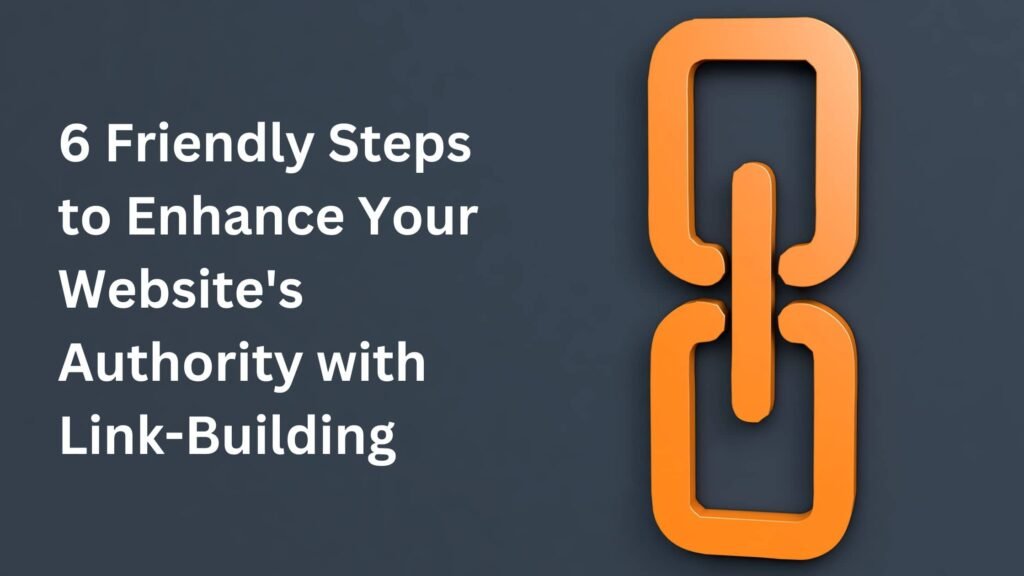
In today’s digital age, a solid online presence is essential for businesses and individuals. And one of the most effective ways to boost your online presence is through link-building. Link-building is acquiring backlinks from other websites to your website. Backlinks are important because they signal to search engines that other websites consider your content to be valuable and authoritative. As a result, it can help improve your search engine rankings and drive more traffic to your website. However, link-building is not a one-size-fits-all strategy. Depending on your goals, industry, and target audience, you can take many different tactics and approaches. In this blog, we’ll explore the various components of link-building, from defining your goals to conducting link prospecting and outreach. We’ll also provide tips and best practices to help you create a successful link-building campaign that drives results.
Here are some key components or tasks to implement link-building:

Before starting your link-building campaign, you must define your goals and what you want to achieve through link-building. It could include improving search engine rankings, increasing website traffic, or building brand awareness. It will help you determine the type of links you need to acquire and the tactics you need to use. Also, the metrics you need to track to measure the success of your efforts.
Below are some important considerations when defining your link-building goals:
Set specific, measurable goals for your link-building campaign and track your progress regularly. You will determine what’s working and what’s not so that you can adjust your strategy accordingly.

Determine your target audience and what websites or online communities they frequent. Next, you should identify potential link opportunities.
Identifying your target audience is a crucial step in any link-building campaign. It will help you determine the websites and online communities most likely interested in linking to your content.
Identifying your target audience is an ongoing process, and staying up-to-date with changes in industry and audience behaviour is essential. By focusing on the websites and communities, you can increase the likelihood of acquiring high-quality backlinks that drive results.

Use tools like Moz or SEMrush to identify websites relevant to the industry and interested in linking to your content. You can also find potential link opportunities through competitor research, backlink analysis, and social media research.
Conducting link prospecting is a crucial component of any successful link-building campaign. It involves identifying websites and online communities relevant to your industry that may be interested in linking to your content.
Here are some important considerations when conducting link prospecting:
Link prospecting is an ongoing process, and it’s essential to identify and evaluate new prospects regularly. In addition, focusing on high-quality, relevant websites and online communities can increase the likelihood of acquiring backlinks that drive results.

Develop high-quality, informative, and engaging content that people will want to link to. It could include blog posts, infographics, whitepapers, case studies, or interactive tools.
Here are some important considerations when creating linkable assets:
It’s important to regularly create new content to attract links and engage with your audience. Creating high-quality, informative content that provides real value to your target audience can increase the likelihood of acquiring backlinks that drive results.

Reach out to website owners, editors, and bloggers to introduce yourself, share your content, and build relationships. You can do this through email, social media, or direct messaging.
Outreach and relationship-building are essential components of any successful link-building campaign. These involve reaching out to relevant websites and online communities to establish relationships and earn backlinks to your website.
Here are some important considerations when conducting outreach and relationship building:
Outreach and relationship building are ongoing processes, and it’s crucial to identify and evaluate new link prospects regularly. By focusing on building solid relationships with other website owners and editors, you can increase the likelihood of acquiring high-quality backlinks that drive results.

Keep track of your backlink profile, search engine rankings, and website traffic to see how your link-building efforts are impacting your online presence.
Monitoring and measuring the results of your link-building efforts is an essential part of the process. Here’s why:
To monitor and measure your link-building results, you can use various tools such as Ahrefs, Moz, Google Analytics, and SEMrush. These tools can help you track your backlink profile, search engine rankings, and traffic metrics, providing valuable insights into the effectiveness of your link-building strategy. By regularly monitoring and measuring your results, you can ensure that your link-building efforts are driving results and positively impacting your website’s search engine visibility and traffic.
In the end, link-building is critical to any successful digital marketing strategy. Acquiring high-quality backlinks from authoritative websites can improve your search engine visibility, drive traffic to your website, and establish your brand as a thought leader in your industry or niche.
It’s essential to define your goals, identify your target audience, conduct link prospecting, create linkable assets, outreach and build relationships and monitor and measure your results. By following these steps and using the right tools and techniques, you can acquire high-quality backlinks that drive actual results for your website.
Just bear in mind that link-building is a long-term process that requires patience, persistence, and a willingness to adapt and evolve. By staying up-to-date with the latest trends and best practices in link-building, you can stay ahead of the competition and achieve your digital marketing goals.

Diginesstor is a dedicated digital marketing agency that helps businesses expand their markets online. We focus on Search Engine Optimization services, including ON-PAGE SEO, OFF-PAGE SEO, TECHNICAL SEO, LOCAL SEO, AMAZON SEO, AND SEO AUDIT, to enhance your online visibility!
info@diginesstor.com
Online Support236-516-4002
Mon-Fri 9am-5pm (PST)Get Subscribed!
[mailpoet_form id="1"]| Cookie | Duration | Description |
|---|---|---|
| cookielawinfo-checkbox-analytics | 11 months | This cookie is set by GDPR Cookie Consent plugin. The cookie is used to store the user consent for the cookies in the category "Analytics". |
| cookielawinfo-checkbox-functional | 11 months | The cookie is set by GDPR cookie consent to record the user consent for the cookies in the category "Functional". |
| cookielawinfo-checkbox-necessary | 11 months | This cookie is set by GDPR Cookie Consent plugin. The cookies is used to store the user consent for the cookies in the category "Necessary". |
| cookielawinfo-checkbox-others | 11 months | This cookie is set by GDPR Cookie Consent plugin. The cookie is used to store the user consent for the cookies in the category "Other. |
| cookielawinfo-checkbox-performance | 11 months | This cookie is set by GDPR Cookie Consent plugin. The cookie is used to store the user consent for the cookies in the category "Performance". |
| viewed_cookie_policy | 11 months | The cookie is set by the GDPR Cookie Consent plugin and is used to store whether or not user has consented to the use of cookies. It does not store any personal data. |
1 Comments
How To Use "Local SEO Near Me" for Business Growth? | Diginesstor
September 7, 2023
[…] 11. Local Backlinks […]